Prostate Cancer Awareness for Indian Patients: A Comprehensive Guide

Prostate cancer is one of the most common cancers affecting men worldwide, and its incidence is increasing in India. Despite its prevalence, awareness about the disease remains low in the country. Early detection and timely treatment can significantly improve outcomes, making it crucial to educate the public about prostate cancer. This blog provides a comprehensive overview of prostate cancer, focusing on Indian patients, the importance of early diagnosis, treatment options, and preventive measures.
What is Prostate Cancer?
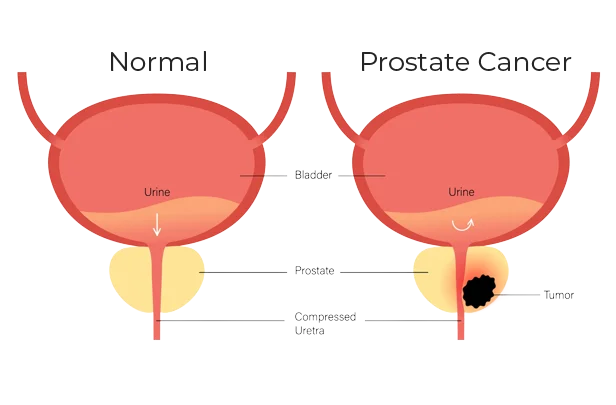
The prostate is a small, walnut-shaped gland located just below the bladder in men. It plays a critical role in the male reproductive system, producing seminal fluid that nourishes and transports sperm. Prostate cancer occurs when abnormal cells in the prostate grow uncontrollably. Over time, these cancerous cells may invade surrounding tissues or metastasize (spread) to other parts of the body, such as the bones and lymph nodes.
Prostate cancer typically grows slowly, and many men may live for years without symptoms. However, in more aggressive cases, the disease can progress rapidly, necessitating prompt intervention.
Prevalence of Prostate Cancer in India: Prostate cancer is the second most common cancer among men globally, but in India, it ranks higher in urban areas, especially in metropolitan cities. The incidence of prostate cancer has been increasing steadily due to factors such as aging, lifestyle changes, and improved diagnostic techniques. According to the National Cancer Registry Programme of India, prostate cancer accounts for 5.4% of all cancers in Indian men. It predominantly affects older men, with the majority of cases diagnosed in those above 60 years of age.
Given the growing burden of the disease in India, men and their families need to be aware of the signs, risk factors, and available treatments.
Risk Factors for Prostate Cancer
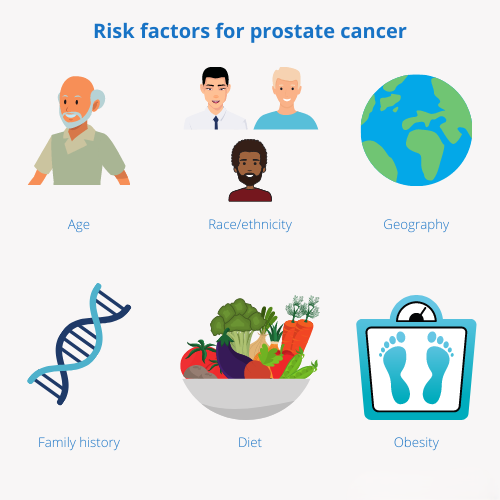
Certain factors can increase a man’s risk of developing prostate cancer. These include:
- Age: The risk of prostate cancer increases with age, particularly after 50 years.
- Family History: Men with a family history of prostate cancer are at higher risk. Genetic mutations such as BRCA1 and BRCA2 can also play a role in hereditary prostate cancer.
- Diet and Lifestyle: A diet high in red meat, processed foods, and low in fruits and vegetables may contribute to a higher risk of prostate cancer. Obesity and a sedentary lifestyle are additional factors.
- Ethnicity: Prostate cancer is more common among men of African descent, but in India, studies suggest a rising incidence among urban populations due to lifestyle changes.
- Environmental Factors: Exposure to toxins, chemicals, and certain occupations may contribute to the risk of developing prostate cancer.
Symptoms of Prostate Cancer
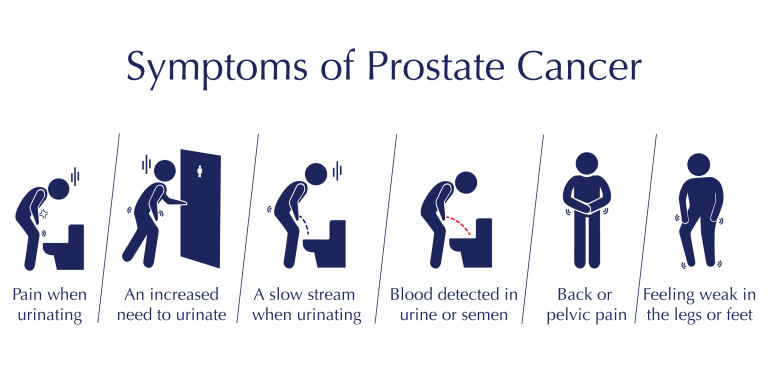
Early-stage prostate cancer may not cause noticeable symptoms, which is why regular screening is essential, particularly for those at higher risk. As the cancer progresses, the following symptoms may develop:
- Frequent urination, especially at night
- Difficulty starting or stopping urination
- Weak or interrupted urine flow
- Pain or burning during urination
- Blood in the urine or semen
- Pain in the back, hips, or pelvis
- Erectile dysfunction
These symptoms can also be associated with benign conditions such as benign prostatic hyperplasia (BPH), but it is important to seek medical advice for proper evaluation.
Diagnosis and Screening
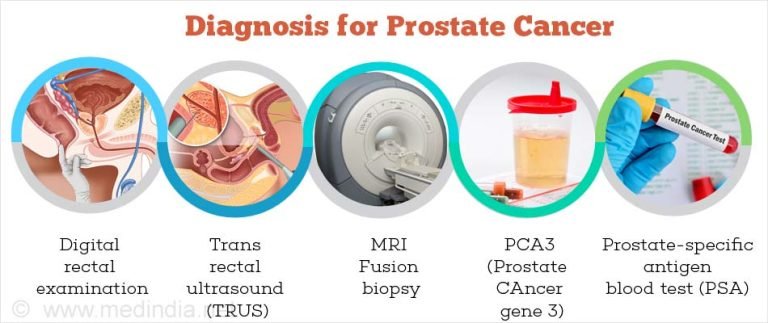
In India, prostate cancer is often detected at an advanced stage due to a lack of regular screening programs and public awareness. Early detection through screening is critical for improving outcomes.
- Prostate-Specific Antigen (PSA) Test: This blood test measures the level of PSA, a protein produced by the prostate gland. Elevated PSA levels can indicate prostate cancer or other prostate conditions, such as BPH or inflammation. However, it is not a definitive test, and further evaluation is needed if PSA levels are high.
- Digital Rectal Exam (DRE): In this physical exam, a doctor feels the prostate gland through the rectum to detect any abnormalities or lumps.
- Biopsy: If PSA levels are elevated or abnormalities are detected during the DRE, a biopsy may be recommended. A small sample of prostate tissue is removed and examined under a microscope for the presence of cancer cells.
- Imaging: MRI, CT scans, or bone scans may be used to determine if the cancer has spread beyond the prostate.
Treatment Options for Prostate Cancer
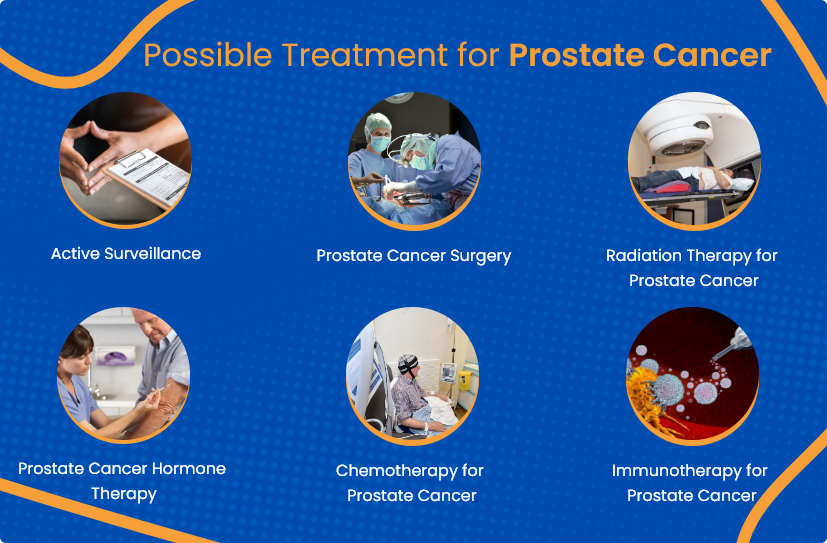
The treatment of prostate cancer depends on various factors, including the stage of the disease, the patient’s age, overall health, and personal preferences. Treatment options can range from active surveillance to more aggressive interventions, such as surgery or radiation. Below are the common treatment modalities:
- Active Surveillance: In cases of low-risk, slow-growing prostate cancer, active surveillance may be recommended. The patient is closely monitored through regular PSA tests and biopsies. Treatment is initiated only if the cancer shows signs of progression.
- Surgery (Prostatectomy): Surgical removal of the prostate gland, known as a prostatectomy, is often recommended for localized prostate cancer. Advances in robotic-assisted surgery have made the procedure more precise, reducing recovery time and side effects.
- Radiation Therapy: Radiation therapy uses high-energy rays to target and destroy cancer cells. It can be delivered externally or internally (brachytherapy), where radioactive seeds are implanted in the prostate.
- Hormone Therapy: Since prostate cancer cells grow in response to male hormones (androgens), hormone therapy is used to reduce the levels of these hormones or block their action. This treatment is often used in combination with radiation or surgery.
- Chemotherapy: Chemotherapy involves the use of drugs to kill cancer cells and is usually reserved for advanced cases where the cancer has spread beyond the prostate.
- Immunotherapy and Targeted Therapy: These newer treatment modalities aim to enhance the body’s immune response to cancer or specifically target cancer cells while sparing healthy tissues. Although still in the experimental phase in many regions, they hold promise for future prostate cancer treatments.
Importance of Early Detection
The prognosis for prostate cancer is highly dependent on the stage at which it is diagnosed. If detected early, the 5-year survival rate for localized prostate cancer is nearly 100%. However, once the cancer spreads to other parts of the body, the prognosis becomes significantly worse.
In India, late-stage diagnosis is common, leading to poor survival rates. Public awareness campaigns, educational programs, and the promotion of regular screening, especially among men over 50, are critical steps in combating this trend.
Preventive Measures and Lifestyle Changes
While some risk factors for prostate cancer, such as age and genetics, cannot be controlled, adopting a healthy lifestyle can help reduce the risk:
- Healthy Diet: A diet rich in fruits, vegetables, whole grains, and low in red and processed meats is associated with a lower risk of prostate cancer.
- Regular Exercise: Physical activity helps maintain a healthy weight, reduce inflammation, and improve immune function, all of which can help prevent cancer.
- Limit Alcohol and Quit Smoking: Reducing alcohol consumption and quitting smoking can decrease the risk of various cancers, including prostate cancer.
- Regular Screening: Men over 50 or those with a family history of prostate cancer should undergo regular PSA tests and DRE exams.
Prostate cancer is an increasingly common health concern for Indian men, particularly in urban areas. Early detection through regular screening and awareness of the risk factors and symptoms can significantly improve the chances of successful treatment.
By promoting a healthy lifestyle and encouraging timely medical consultations, the burden of prostate cancer in India can be reduced. Every man over 50 should take proactive steps to monitor his prostate health and seek medical advice when necessary.
With increased awareness and improved healthcare access, Indian men can lead longer, healthier lives, free from the fear of prostate cancer.















